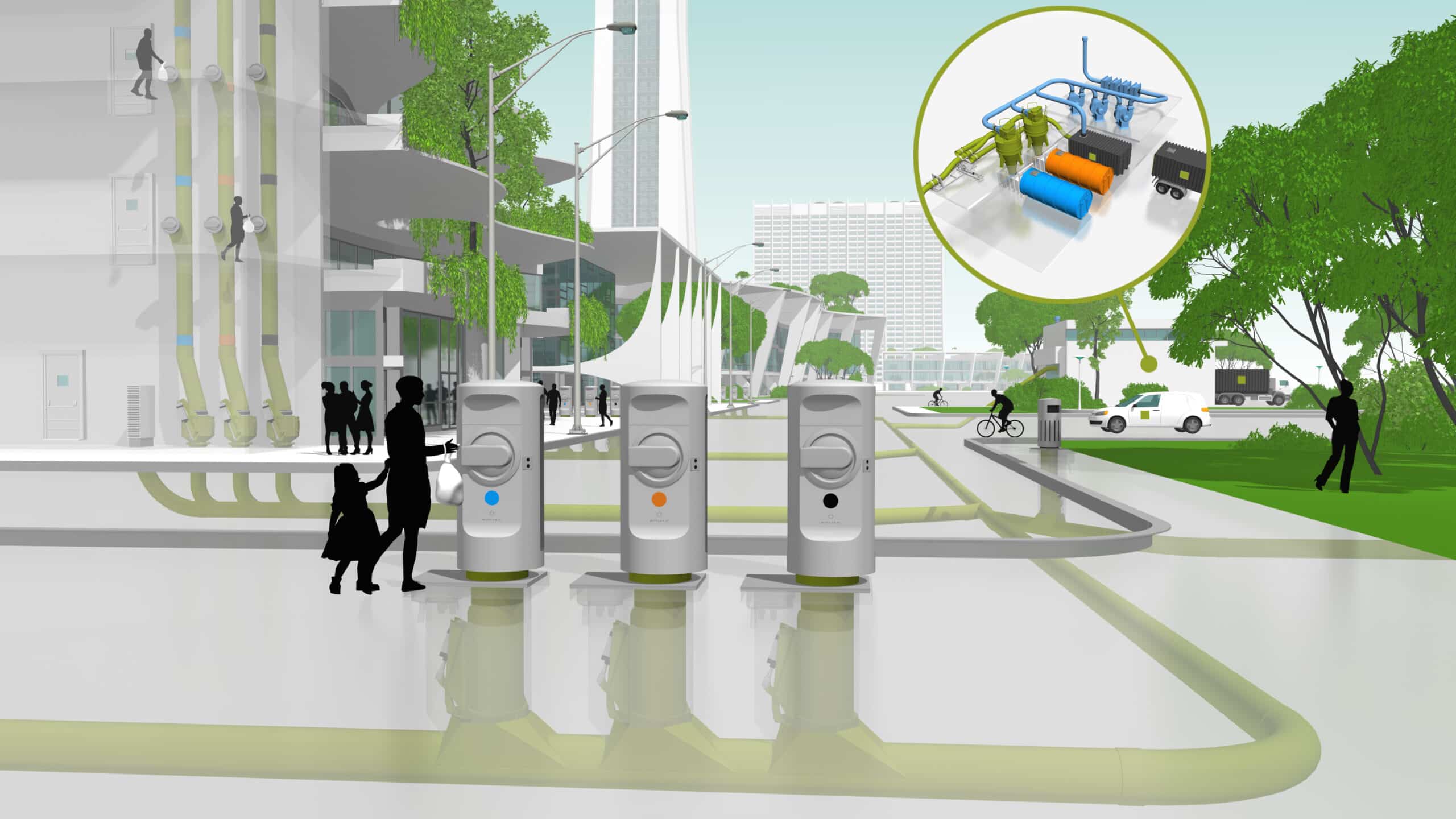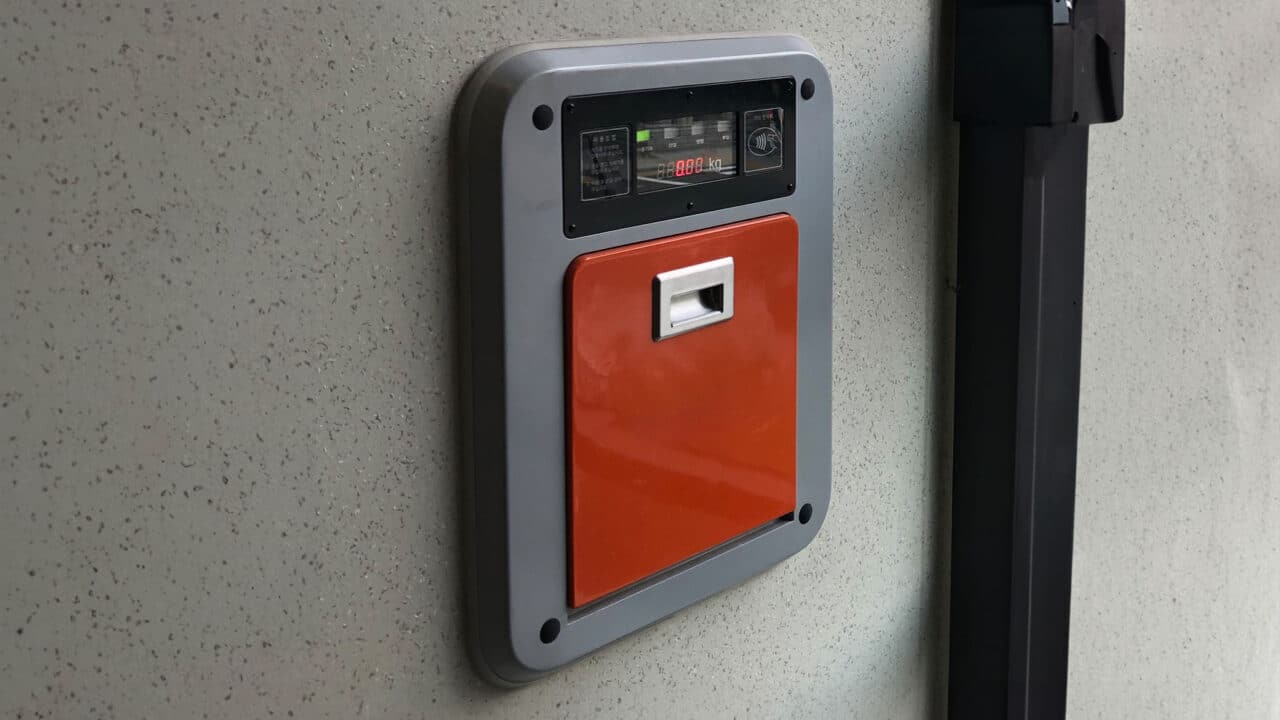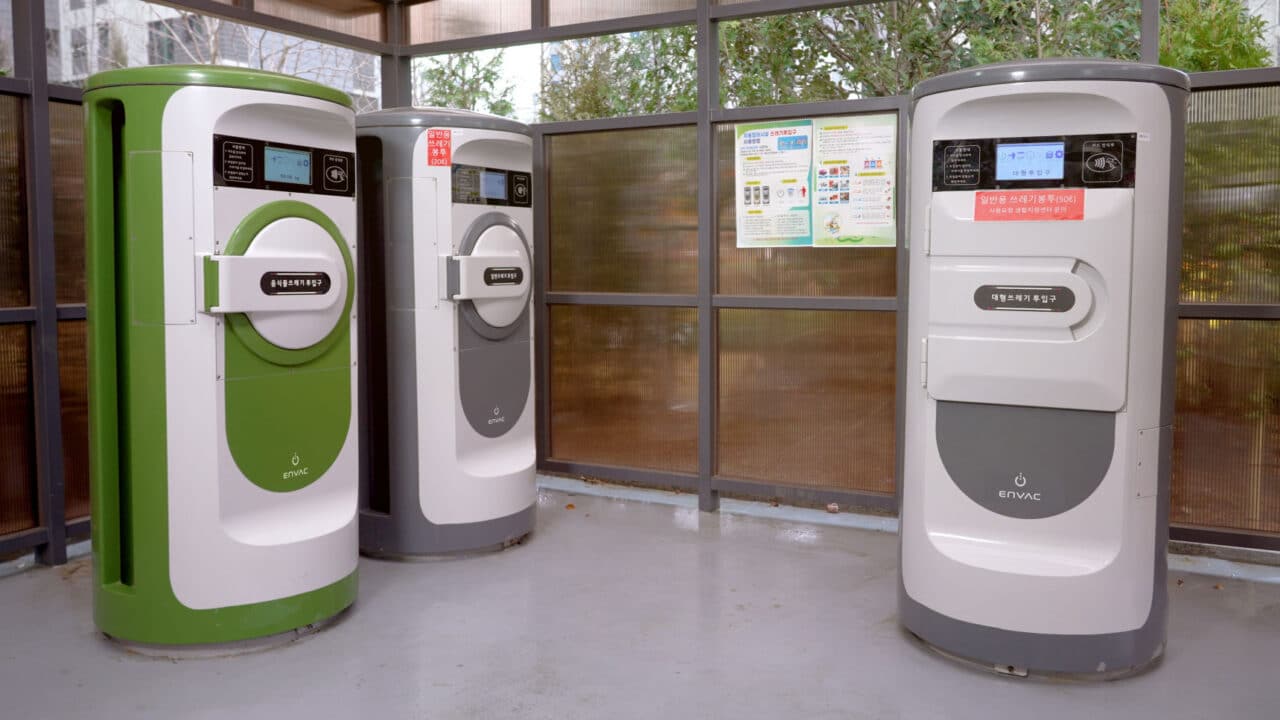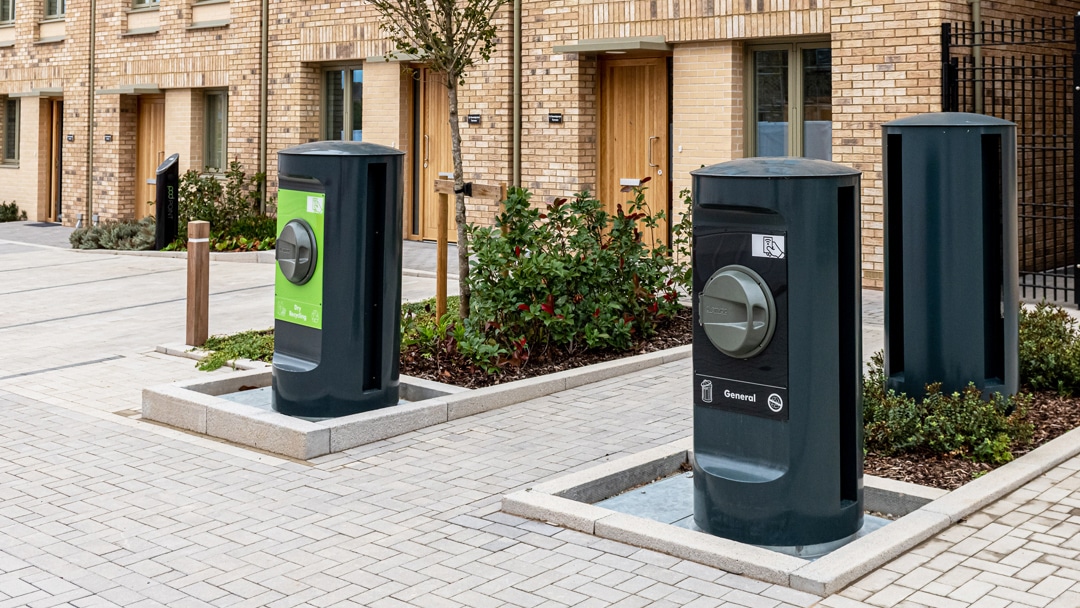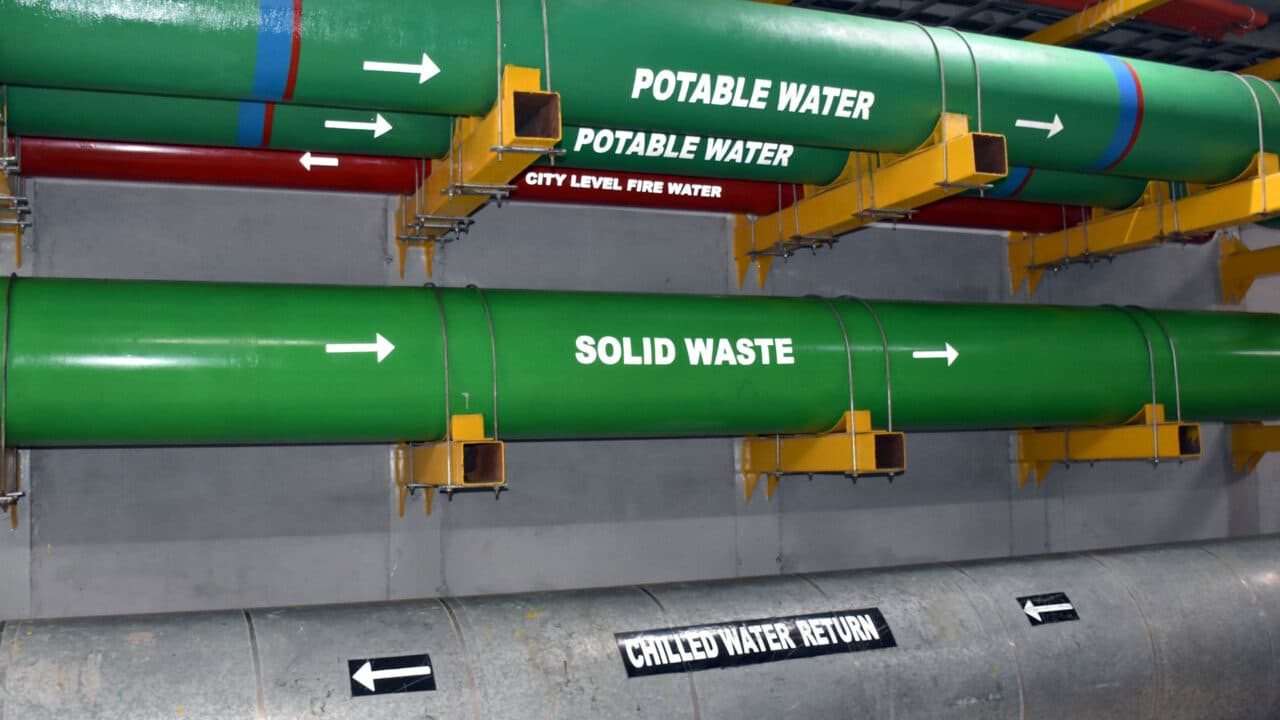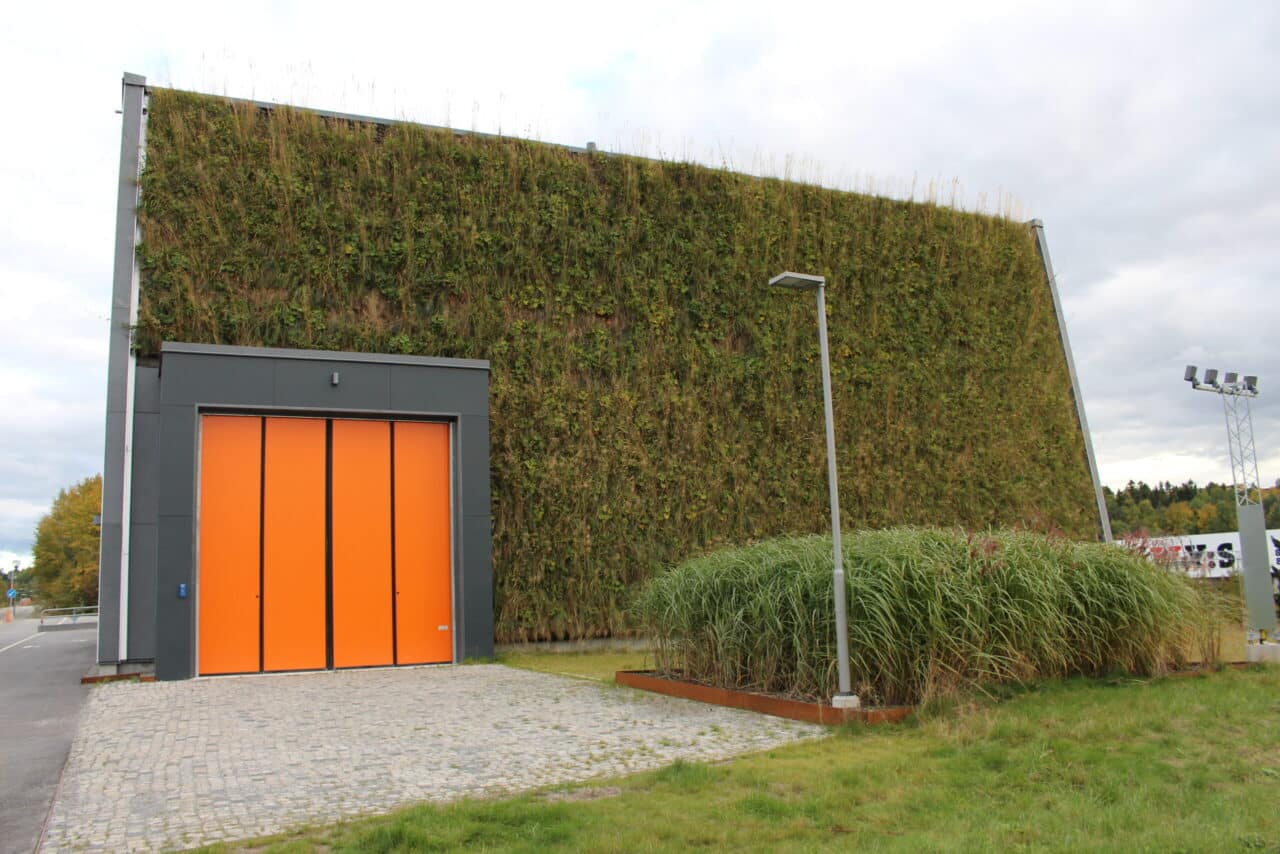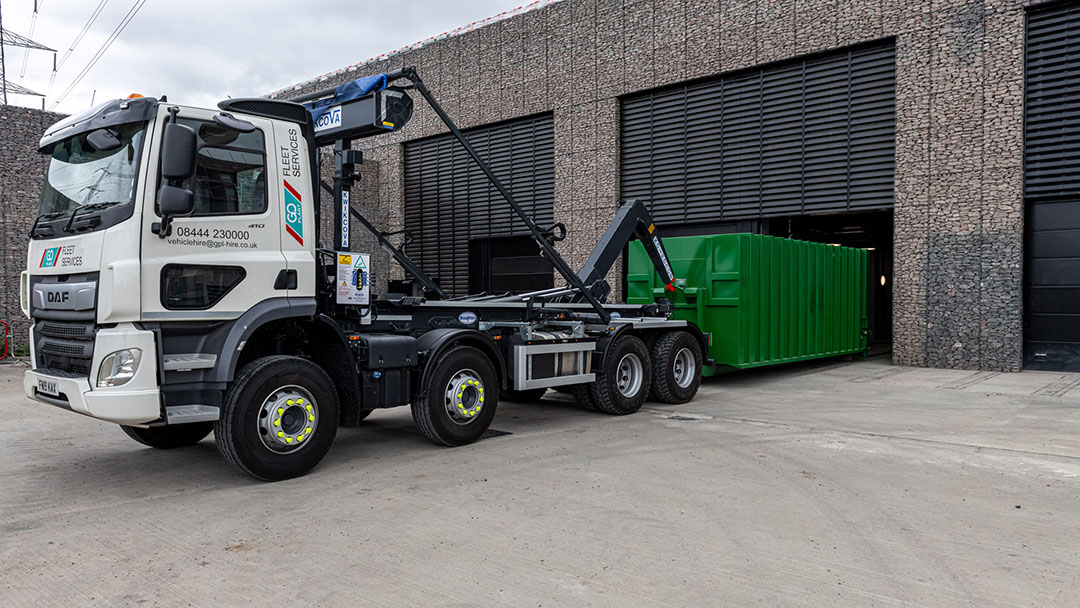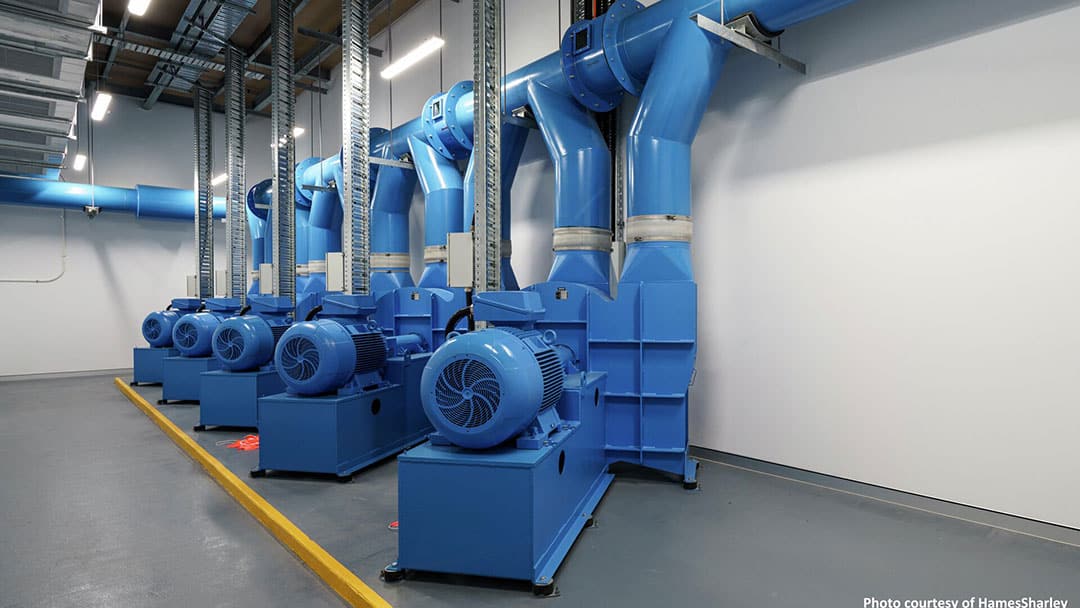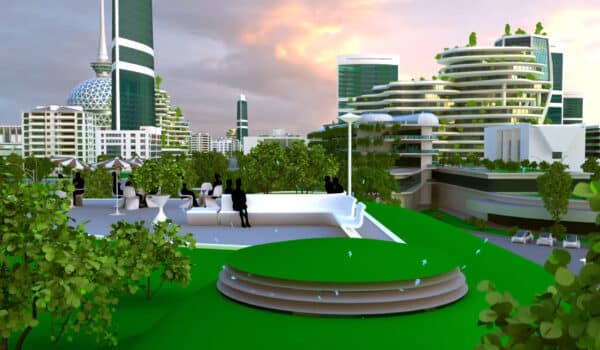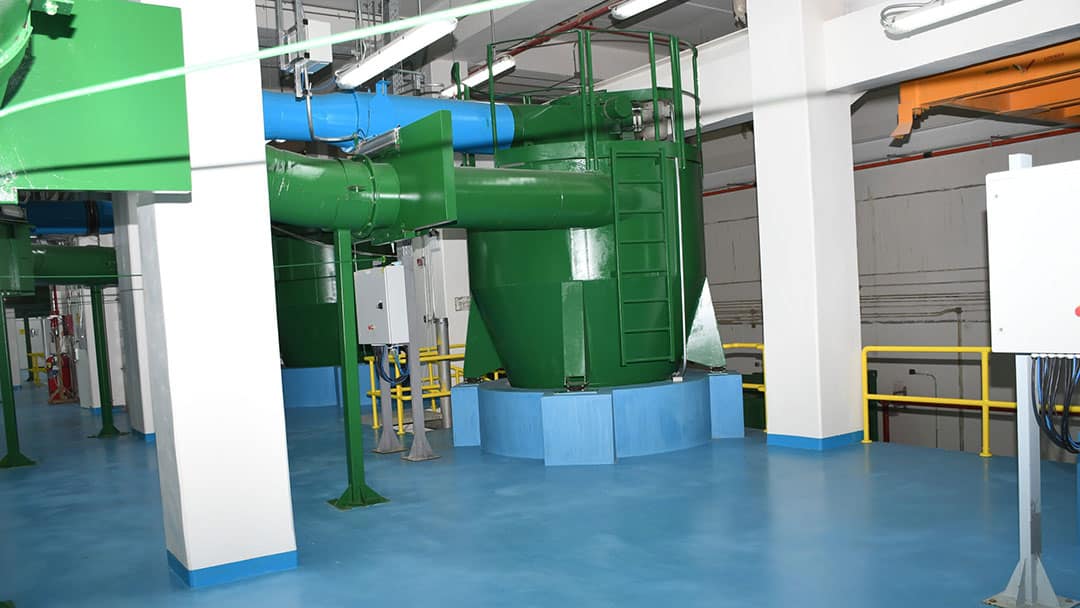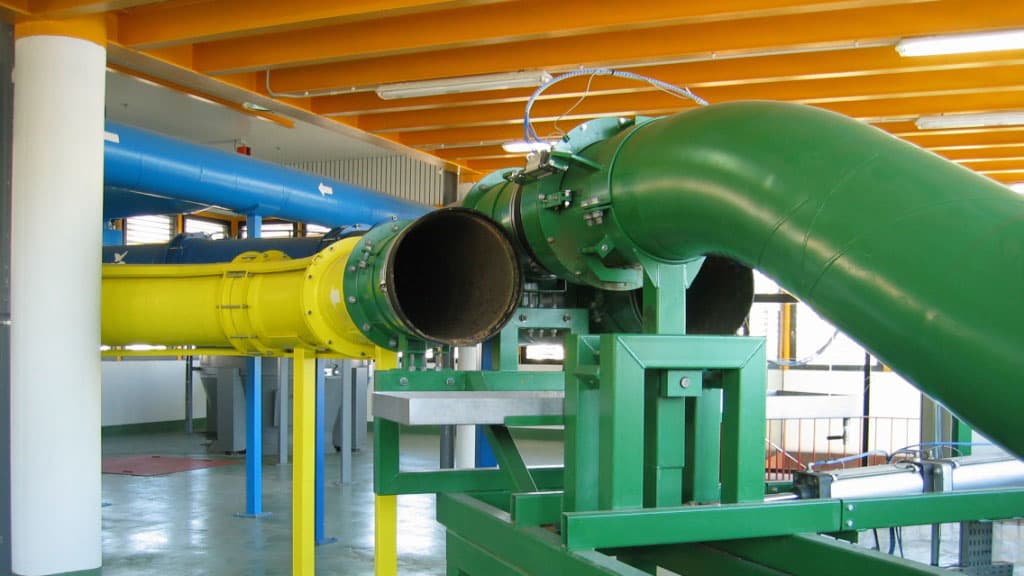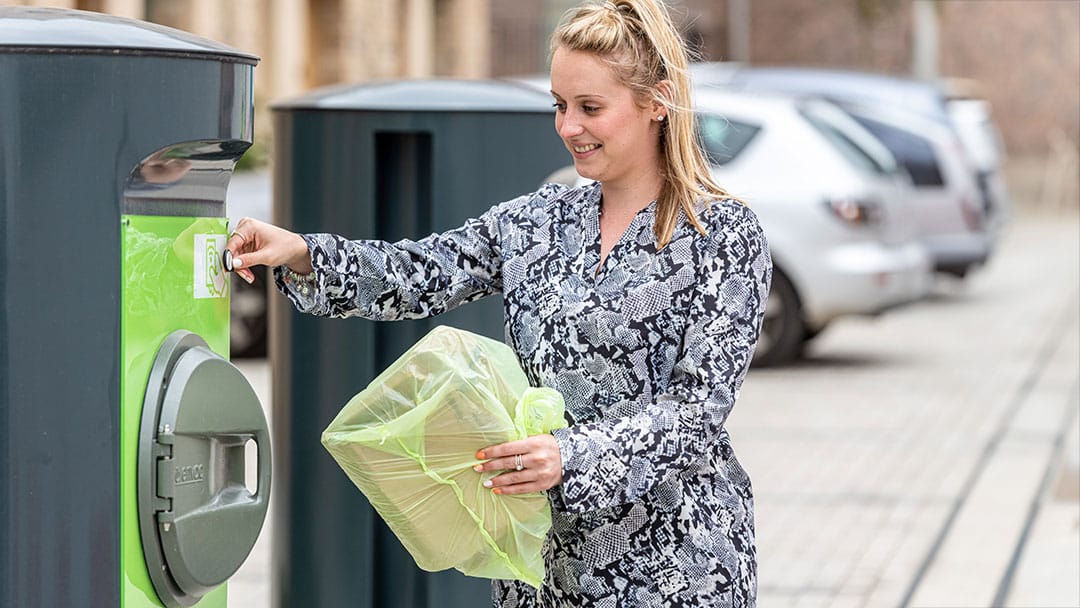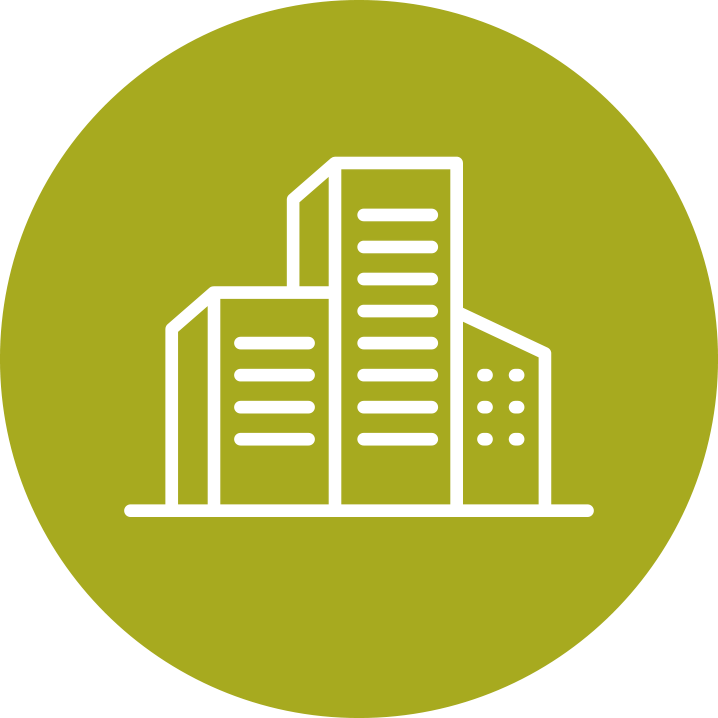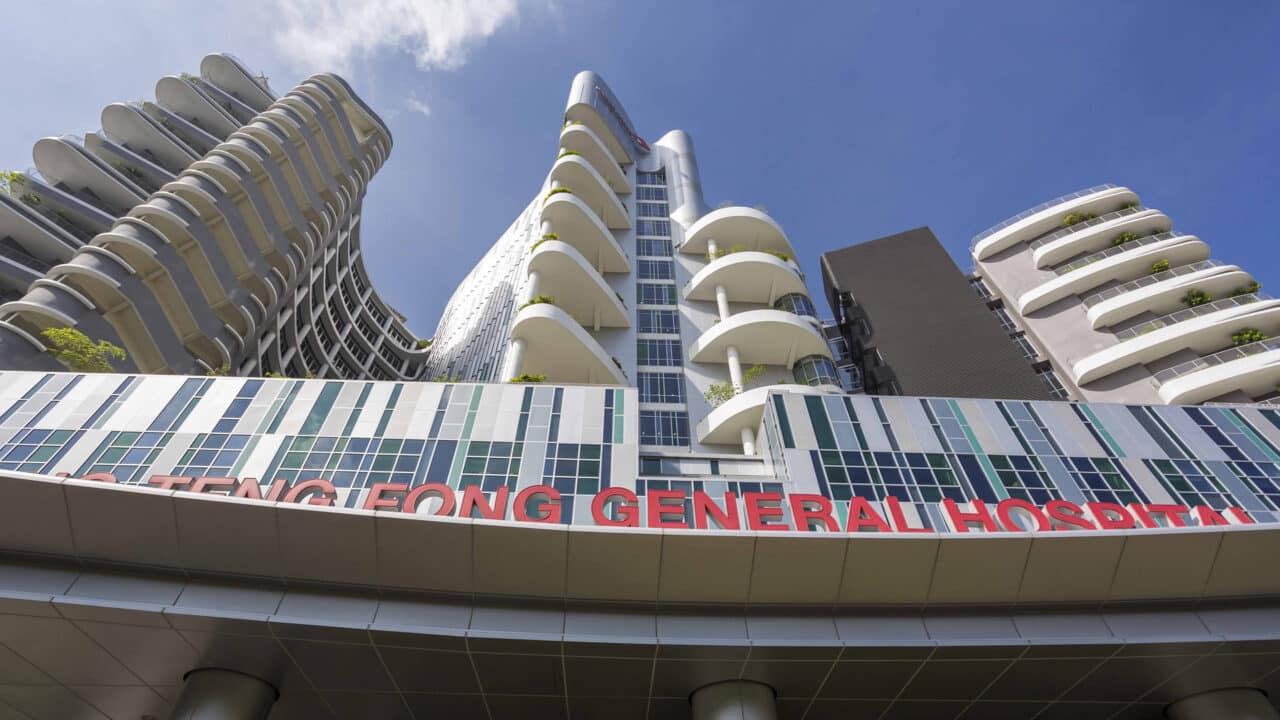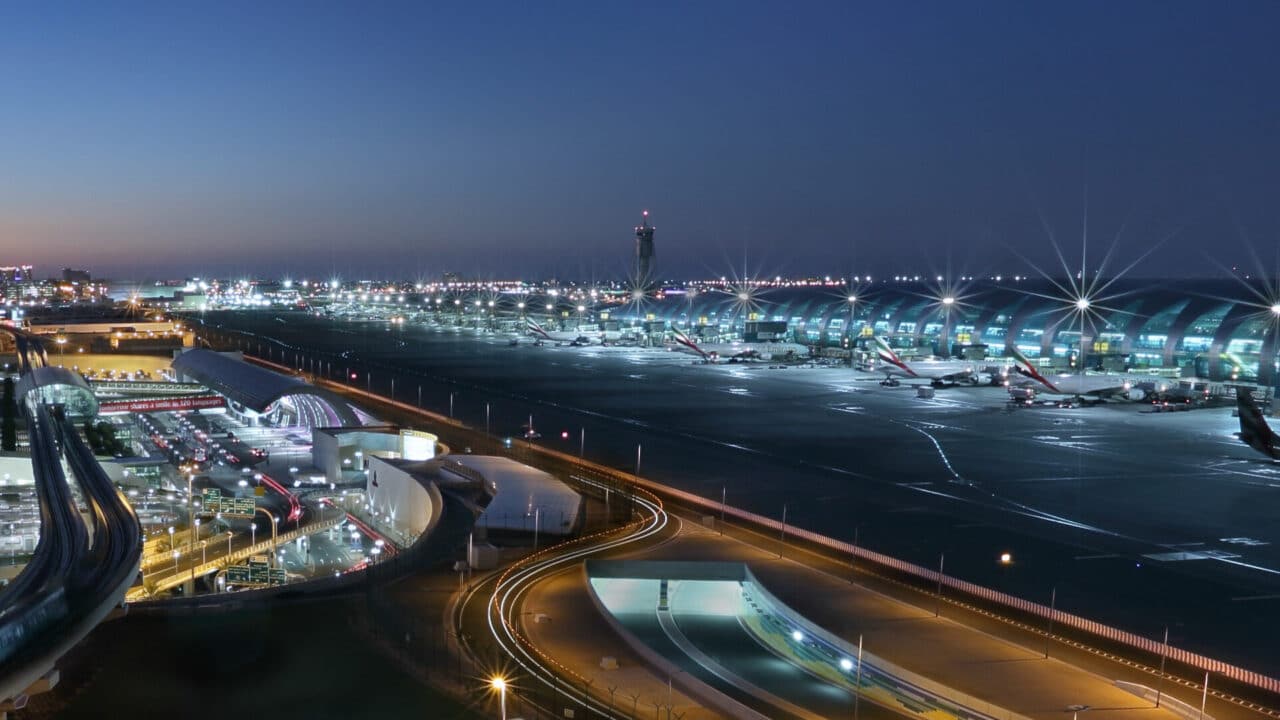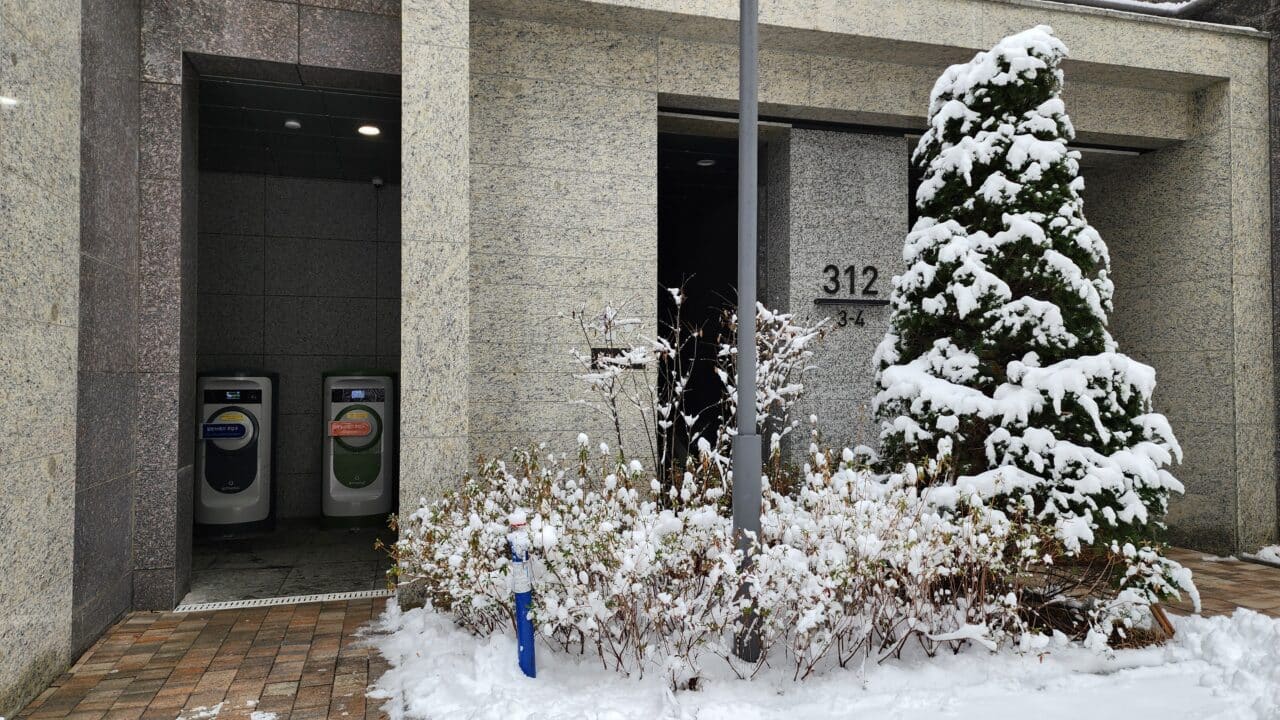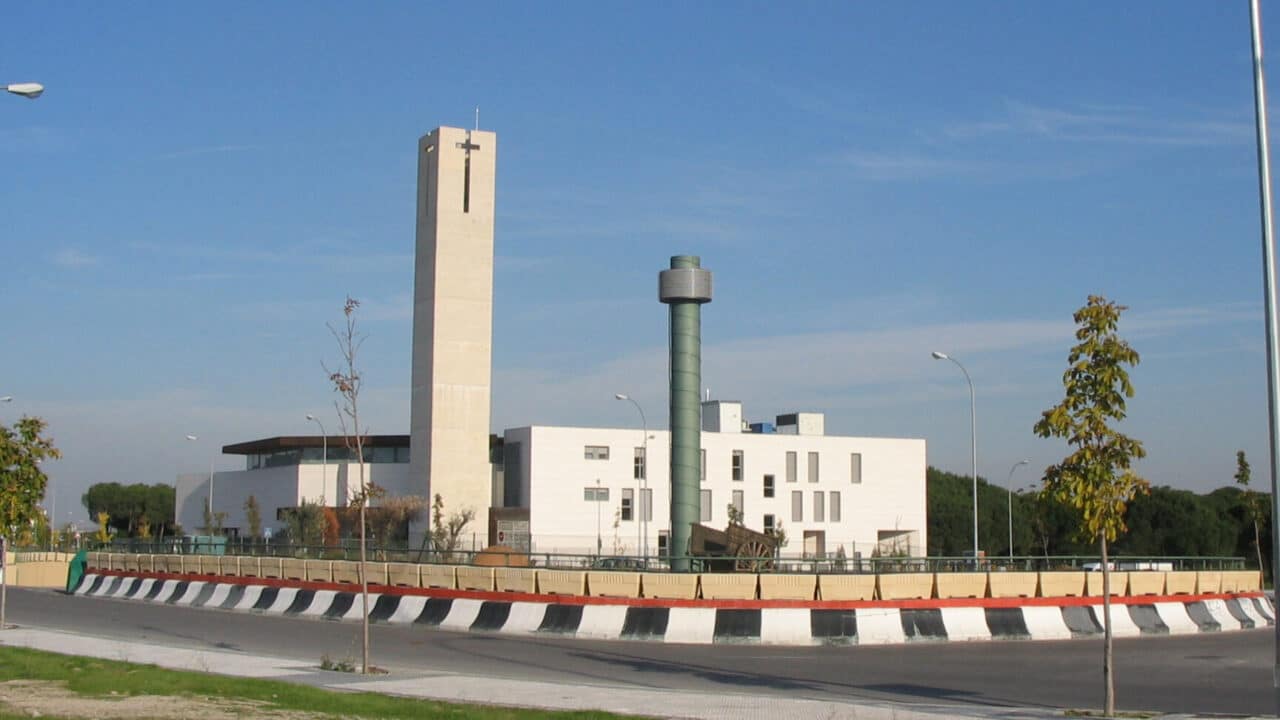Integrated part of the urban infrastructure
With the stationary system, waste management becomes an integrated part of urban infrastructure, much like water, sewage, or any other essential city service. As the demand for recycling and zero-waste solutions grows, so too does the need for waste rooms, recycling stations, and frequent waste collection, along with the associated collection vehicle routes.
In contrast, Envac’s waste inlets are automatically emptied, transporting waste through underground pipes and out of the area. This eliminates the need for large bins inside and outside buildings, reducing reliance on traditional collection routes. The freed-up space can be repurposed for green areas, pedestrian walkways, cycle lanes, or even small businesses such as bike repair shops.


